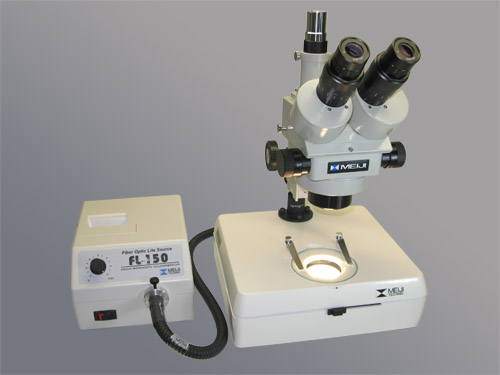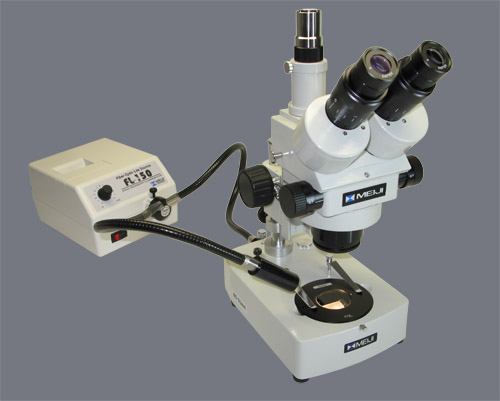
Protein Crystallography
A good stereo microscope is used during evaluation of crystallization experiments for distinguishing between amorphous and crystalline specimens. A typical setup would consist of a zoom microscope with a crossed polarizing attachment and at least 10x magnification. Higher magnifications are ideal for easy detection of small microcrystals.
Examination of Crystallization Drops
A good stereo microscope is used during evaluation of crystallization experiments for distinguishing between amorphous and crystalline specimens. A typical setup would consist of a zoom microscope with a crossed polarizing attachment and at least 10x magnification. Higher magnifications are ideal for easy detection of small microcrystals.

EMZ Stereo on RZBD Stand
The setup shown above is suitable for looking at properties of crystals such as birefringence (using the MA550 rotatable analyzer and MA667 polarizer) and for identifying conditions that cause precipitation or crystal growth. In the latter case, a polarizer would not be used because the color of the precipitate is a crucial indicator.
The RZBD stand enables darkfield illumination for observation of samples in which the precipitate is white or transparent, such as with gelatinous proteins.
The following is a list of parts for this configuration (reference "Protein Crystallography" when ordering):
| Part Number | Description |
| EMZ-5TR | Zoom stereo body |
| MA502 | 10x eyepieces (paired) |
| FK | Focusing holder, extended throat depth |
| RZBD/100 Beige (use RZBD/200 for 220v) | Brightfield/darkfield stand |
| KBL/1 | Flange |
| KBL/2 | Pillar |
| MA550 | Rotatable polarizing filter |
| MA667 | Polarizing plate |

EMZ Stereo on BD Stand with FL151 Fiber Optic Illuminator
An alternative configuration is shown above, which uses the BD stand with a rotatable mirror in base for pseudo-darkfield illumination, the MA550 rotatable analyzer and MA667 polarizer, and a dual-arm adjustable self-supporting fiber optic illuminator, allowing top illumination from various angles.